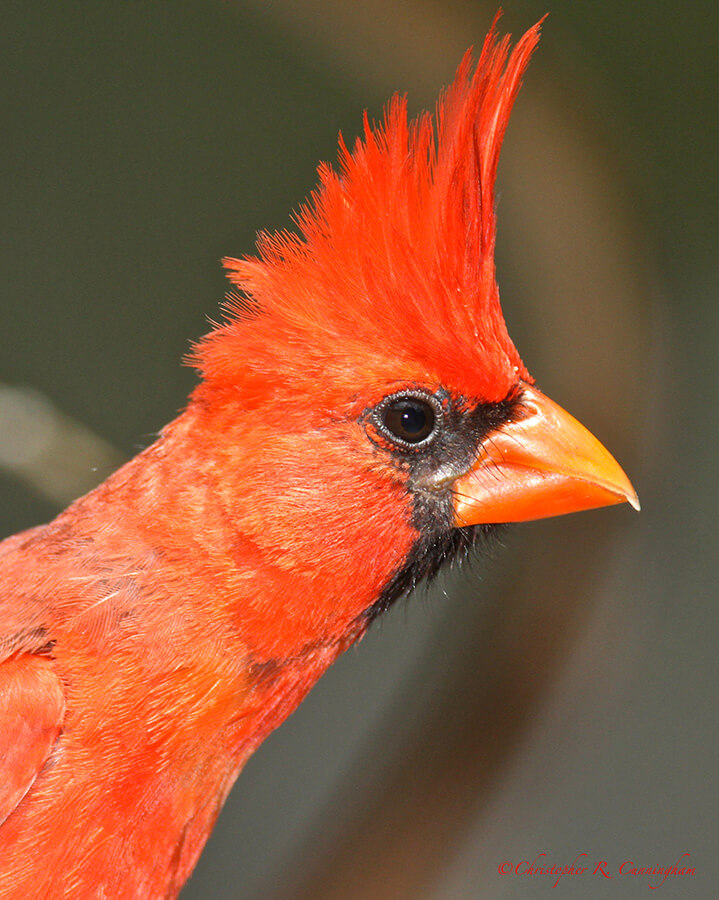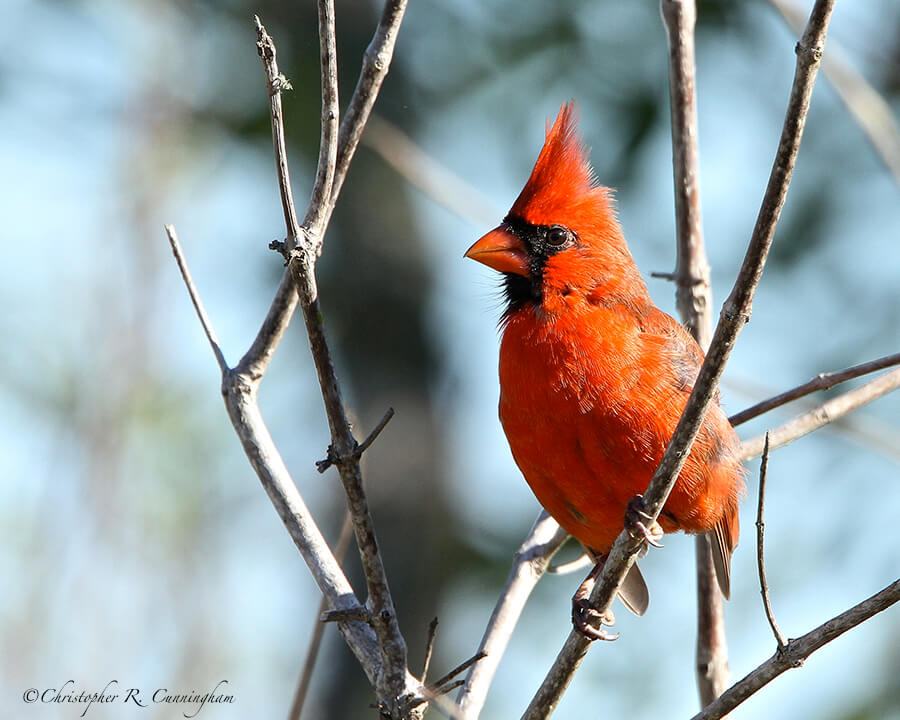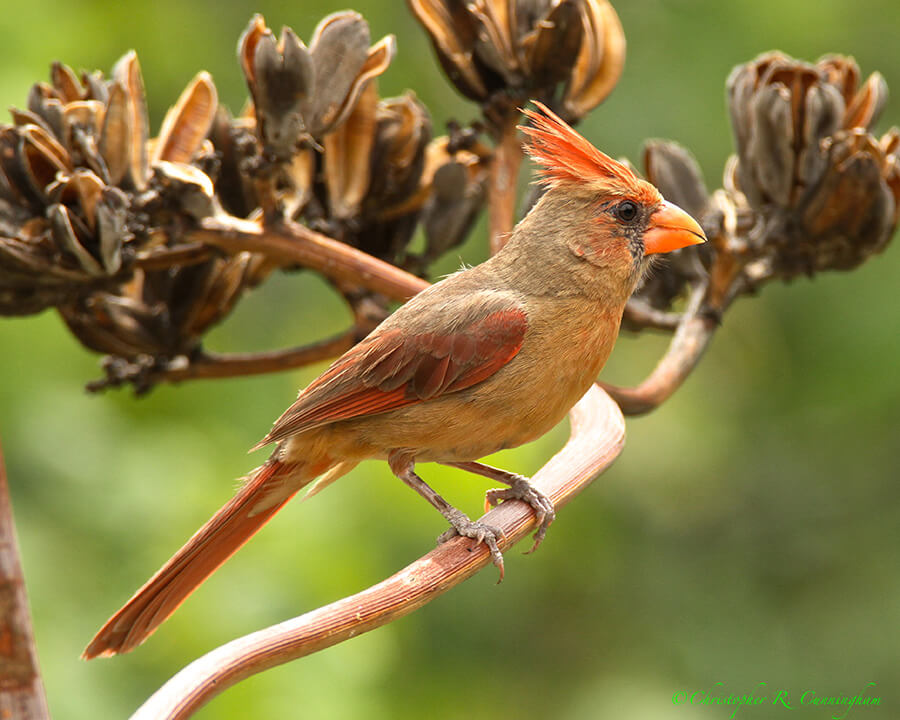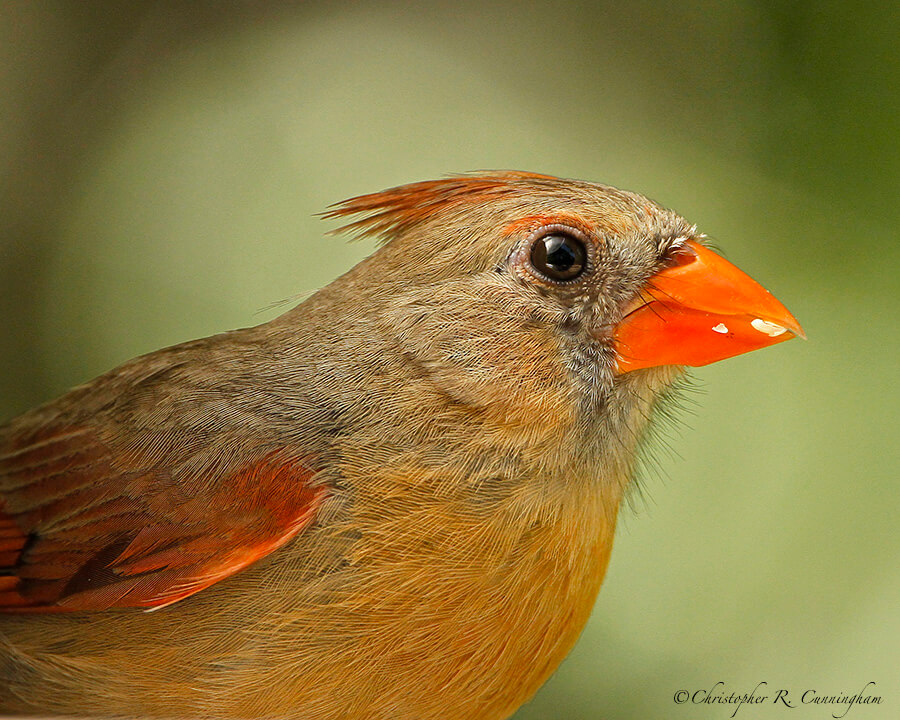
During our recent road trip to southeast Arizona we once again encountered Cardinalis cardinals superbus, a bird sometimes referred to as the “Arizona Cardinal.” I paused for a closer look and made a few comparisons with our own Cardinalis cardinals magnirostris, the Northern Cardinal subspecies that occurs throughout the eastern third of Texas.

The Arizona race of cardinals occurs in southern California, Arizona, New Mexico and northern Mexico and is generally larger, taller-crested, longer-tailed, and more brightly colored (less gray on the back) than Texas Gulf Coast cardinals, or any of the other races of cardinals in the U.S. The Arizona Cardinal’s face mask also tends toward lighter shades and is smaller, often not meeting across the top of the bill. In general behavior, the Arizona subspecies was indistinguishable from our familiar Texas birds. Their songs, however, varied by a note or two here and there.

C. c. magnirostris is a beautiful bird and common bird—a bird so common that we tend to ignore it, despite its beauty. Sometimes in our travels, too, we are so taken with the new species encountered that we overlook the close relatives of familiar animals that cross our paths.

The Arizona Cardinal is a spectacular bird, and not easy to miss. But how many other close relatives of our less showy backyard birds are we overlooking during our far-flung birding adventures? Learning about (and keeping straight) these minor geographic variations in our native birds is yet another aspect of this incredible hobby we call birdwatching.
Why hurry over beautiful things? Why not linger and enjoy them?—Clara Schumann
©2014 Christopher R. Cunningham. All rights reserved. No text or images may be duplicated or distributed without permission.